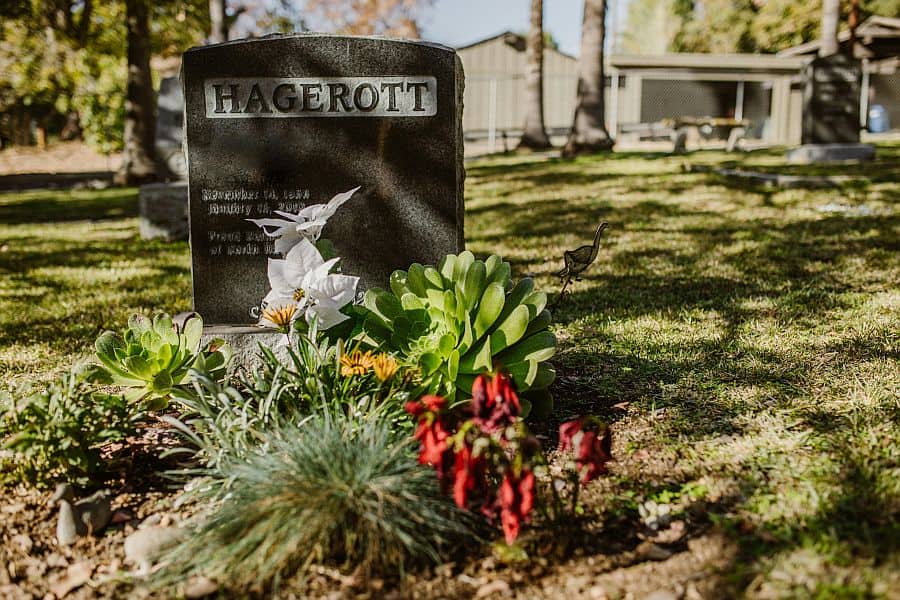Historical Perspectives: The Evolution of Cemetery Floral Traditions
Flowers have always held a special place in how we express our emotions, particularly when it comes to remembering and honoring those we’ve lost. The tradition of placing flowers at gravesites dates back centuries, and it’s fascinating to see how these practices have changed and adapted over time. From ancient customs to modern rituals, the use of flowers in cemeteries reflects a rich history of cultural, religious, and societal shifts.
In this post, we’ll explore how cemetery floral traditions have evolved and what they signify in different periods and cultures.
Ancient Origins: Flowers as Symbols of Life and Death
The practice of using flowers to honor the deceased has been around for thousands of years. Even in ancient times, people recognized flowers as symbols of the beauty and transience of life.
Neanderthal Burials: Early Floral Practices
Interestingly, the tradition of placing flowers with the deceased might go all the way back to Neanderthals. Archaeologists discovered pollen around a 50,000-year-old Neanderthal skeleton in Iraq, hinting that flowers might have been part of the burial process. While this interpretation is still debated, it’s incredible to think that such a gesture could represent one of the earliest ways humans honored their dead.
Ancient Egypt: The Connection Between Flowers and the Afterlife
In Ancient Egypt, flowers were deeply intertwined with beliefs about the afterlife. Egyptians saw flowers as powerful symbols that pleased the gods. The lotus flower, in particular, was associated with rebirth and eternal life. Many Egyptian tombs depict garlands of lotus flowers, which were often used to decorate the burial sites of pharaohs and nobles.
Ancient Greece and Rome: Mourning with Floral Tributes
The Greeks and Romans also had a strong tradition of using flowers in funeral rites. In Ancient Greece, wreaths and garlands were placed on the bodies of the deceased and at their graves, symbolizing the fleeting nature of life. The Romans took this tradition further with their “Rosalia” festival, during which they scattered roses on graves, blending the acts of mourning and celebration.
The Middle Ages: Religion Shapes Floral Traditions
As Christianity spread during the Middle Ages, religious beliefs began to influence cemetery practices, including the use of flowers. During this period, the symbolic meanings of flowers became closely linked to Christian themes.
Christian Symbolism: The Spiritual Meaning of Flowers
In medieval Christian Europe, flowers started to take on specific meanings related to religious beliefs. For example, the lily became a symbol of purity and was closely associated with the Virgin Mary, making it a common choice for graves. Red roses, representing the blood of Christ, symbolized sacrifice and resurrection, and were often used to honor martyrs and saints.
Churchyards and Floral Offerings
As churchyards became the main burial sites, flowers continued to play a significant role in funeral rites. Mourners would bring flowers to graves during funerals or on the anniversaries of a loved one’s passing. The practice of scattering flowers over graves or throughout the church during services became a way to honor the deceased and beautify the sacred space where they were laid to rest.
The Victorian Era: The Flourishing of Floral Symbolism

The Language of Flowers
Victorians were fascinated by the “language of flowers,” or floriography, where different flowers were assigned specific meanings. People often used flowers to convey emotions that were difficult to express in words, especially during funerals:
– Lilies symbolized purity and the restored innocence of the soul.
– Roses had varied meanings depending on their color—red for love, white for purity, and yellow for friendship.
– Forget-me-nots represented remembrance and enduring love.
Mourning Etiquette and Floral Arrangements
Victorian mourning customs were highly elaborate, and flowers played a central role in these rituals. Funerals often featured carefully selected floral arrangements that conveyed specific messages about the deceased and the feelings of the mourners. The practice of sending floral tributes to grieving families became widespread, and cemeteries were often adorned with intricate floral designs.
The Garden Cemetery Movement
The Victorian era also gave rise to the garden cemetery movement. Cemeteries were no longer just places to bury the dead; they became beautifully landscaped parks where people could visit, reflect, and remember. Flowers and plants were essential elements in these gardens, symbolizing life, beauty, and the natural cycle. This movement significantly influenced the development of modern cemeteries, where flowers and greenery remain central.
The 20th Century: Modern Changes in Floral Traditions
The 20th century brought significant changes to cemetery floral traditions, driven by societal shifts, technological advancements, and changing attitudes toward death and mourning.
Simplification of Funeral Practices
As society modernized, there was a trend toward simplifying funeral practices. While flowers remained important, the elaborate customs of the Victorian era began to fade. Funeral homes and florists made it easier to arrange and send floral tributes, leading to more standardized arrangements, such as funeral wreaths and casket sprays.
Memorial Days and National Remembrance
The 20th century also saw the establishment of national days of remembrance, such as Memorial Day in the United States. These days became associated with the tradition of placing flowers on the graves of soldiers and war veterans. The red poppy, in particular, became a symbol of remembrance for those who died in military service, a tradition that continues to this day.
The Rise of Cremation and New Floral Practices
As cremation became more popular, the role of flowers in memorials began to change. While flowers were still used in funeral services, they were often placed around urns or incorporated into memorial gardens rather than traditional grave sites. Cremation gardens, designed as peaceful spaces for scattering ashes, often include flowers and plants that symbolize remembrance and peace.
Contemporary Traditions: Personalization and Eco-Friendly Options
In recent years, cemetery floral traditions have become more personalized and environmentally conscious, reflecting changing attitudes toward death and sustainability.
Personalized Floral Tributes
Today, there’s a growing emphasis on creating personalized floral tributes that reflect the individuality of the deceased. Rather than sticking to traditional flowers, families often choose blooms that held special significance for their loved ones or symbolize specific memories. Custom arrangements featuring favorite flowers or colors have become more common, allowing for a deeply personal and meaningful expression of remembrance.
Eco-Friendly Memorials
As environmental concerns have grown, so has the interest in eco-friendly funeral and memorial practices. This has led to an increase in the use of native plants, biodegradable urns adorned with flowers, and “green burials,” where the body is laid to rest in a natural setting with minimal environmental impact. In these settings, wildflowers and native flora are often planted around the burial site, blending the grave with the natural landscape and symbolizing a return to nature.
Digital Memorials and Virtual Tributes
The digital age has also influenced cemetery floral traditions. Online memorials now allow people to send virtual flowers or create digital tributes, enabling friends and family from all over the world to participate in the memorial process. This new way of honoring the dead reflects the global connections that have become a part of modern life.
Conclusion: The Enduring Significance of Floral Traditions
Cemetery floral traditions have evolved over time, reflecting broader changes in how we approach death and remembrance. From ancient rituals to today’s personalized tributes, flowers have remained a powerful symbol of life, love, and memory. These traditions, whether through a simple bouquet or a carefully tended garden, connect us to those we’ve lost and remind us of the beauty and fragility of life.
As these practices continue to evolve, they offer a comforting way to honor the dead while keeping their memory alive. Whether through a traditional arrangement, an eco-friendly garden, or a virtual offering, the act of placing flowers at a grave remains a deeply human expression of respect and love.
